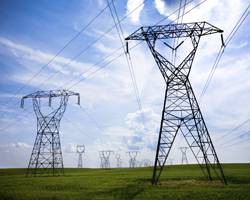North American Power Grids Becoming More Reliable
North America's power grids set new records for reliability in 2014 despite being tested by extreme cold during the polar vortex and rising concerns about physical and cyber attacks on the network.
Over the last year, newspapers have been full of stories about the threat posed by physical and cyber-attacks on transformers and power lines, extreme weather and solar storms.
But on most measures, electricity networks across the United States and Canada are becoming more reliable as a result of increased investment and attention to operational standards over the last decade.
There were fewer interruptions last year as a result of failures originating in the bulk power system, which includes power generators and high-voltage transmission lines.
The most significant threat to reliability came from extreme weather events, including the polar vortex in January 2014, according to the North American Electric Reliability Corporation (NERC).
Even so, grid operators declared Level 3 Energy Emergency Alerts only four times last year, fewer than in any other year on record; only one of those resulted in actual customer disconnections.
Transmission lines and sub-stations are becoming more reliable. On average, there have been fewer than 4 unplanned transmission outages resulting in loss of customer power per year since 2012, down from with 10 a year between 2002 and 2011.
No customers lost electricity as a result of physical or cyber-attacks on power plants, high-voltage sub-stations and transmission lines in 2014, according to NERC.
Resilience
Since the August 2003 blackout, which cut power to 50 million people across the Northeast United States and Ontario,and left some without power for up to four days, governments on both sides of the border and the power industry have made reliability a much higher priority.
There have been substantial investments in transmission capacity but more important have been increases in planning, coordination and training designed to avert critical conditions on the grid developing.
A sniper attack in 2013 and equipment thefts in 2014 from the Metcalf substation in California set off a fierce debate in Washington about the threat from criminals, terrorists and foreign powers.
Regulators have also stepped in to require the power industry to develop plans for dealing with a geomagnetic storm from the sun which could cause widespread transformer failures.
But the biggest threat to reliability continues to come from small operational and planning miscalculations that can quickly escalate across a tightly connected system like the power grid.
The 2003 blackout was triggered by nothing more dangerous than a handful of overgrown trees coming into contact with high-voltage lines.
What should have remained a local problem spiralled because of computer failures, poor staff training and grid protection systems which made matters worse by over-reacting.
NERC and its web of technical committees have put substantial effort into trying to prevent a recurrence through the development of mandatory reliability standards over the last decade.
NERC has developed or is developing public standards for everything from tree-cutting, generator maintenance, capacity planning, cyber-attacks and geomagnetic disturbances.
Improvements in demand-side management, including demand response capacity markets and peak-shaving programmes, have reduced the strain on the grid at critical times.
But there is now what might be termed a reliability paradox: greater attention to reliability has made the grid stronger even as the cascade of reports has heightened concern among policymakers and the public.
Threats to the grid from high impact low frequency (HILF) events such as physical and cyber attacks, solar storms and pandemics are real and require careful preparation.
But a narrow and excessive focus on HILFs risks distracting policymakers and diverting resources from more mundane reliability concerns which arguably pose a bigger challenge.
The best way to harden the grid against extreme threats is to continue improving its resilience in the face of daily challenges from trees, bad weather and unexpected equipment failures.
By John Kemp








